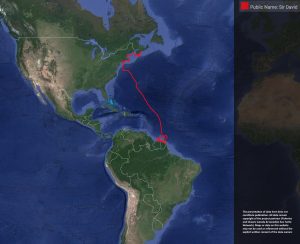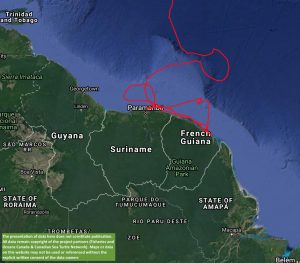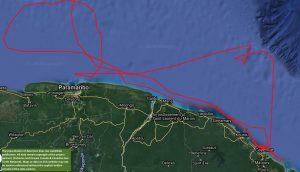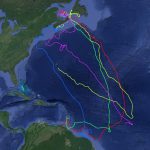
Sir David’s track so far
We’re extremely interested in Sir David these days. We are one of the only research programs that satellite tags male leatherback turtles, so it’s particularly exciting to see what they do.
You’ll note, if you look closely, that Sir David is spending time off the coasts of Suriname and French Guiana.

Sir David’s track zoomed in
We know from the work we have done on male leatherbacks that they hang out off the nesting beaches just before, and during the early part of, the nesting season. That’s where they have the best chance of encountering and mating with female turtles.
Sir David is currently patrolling the waters outside of three leatherback turtle nesting beaches: Paramaribo and Galibi, in Suriname, and Cayenne in French Guiana.

Sir David moving between three nesting beaches
“Look at how he is not just sticking with one beach,” says Dr. Mike James, a sea turtle scientist at Fisheries and Oceans Canada, our project partner. “His track is a great demonstration of why we talk about leatherback genetics in terms of regions instead of by beach.”
This means that the turtles from Paramaribo and Cayenne—even though they are different beaches in different countries—will be genetically similar. They may, for example, have the same father—a turtle like Sir David, who is working that whole area. Busy guy.


